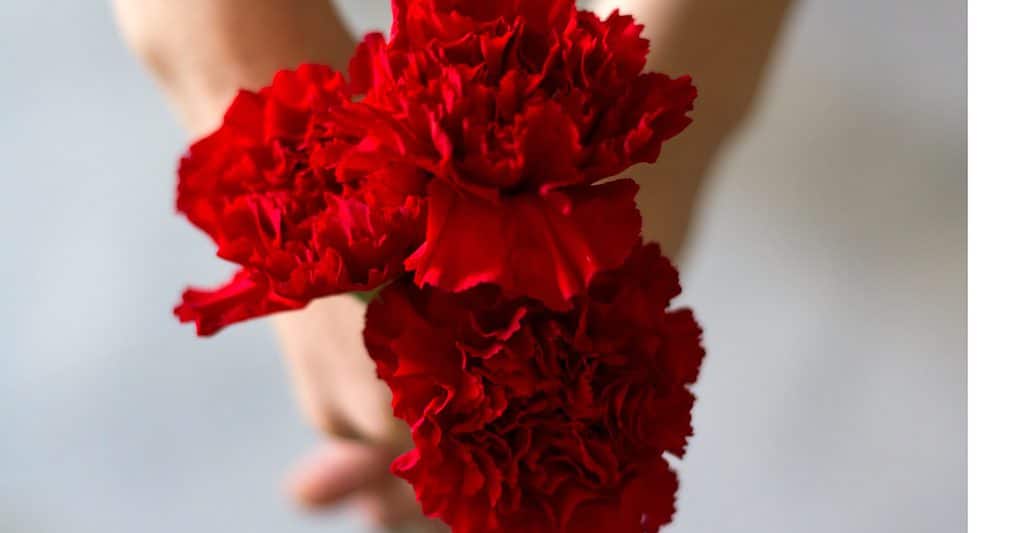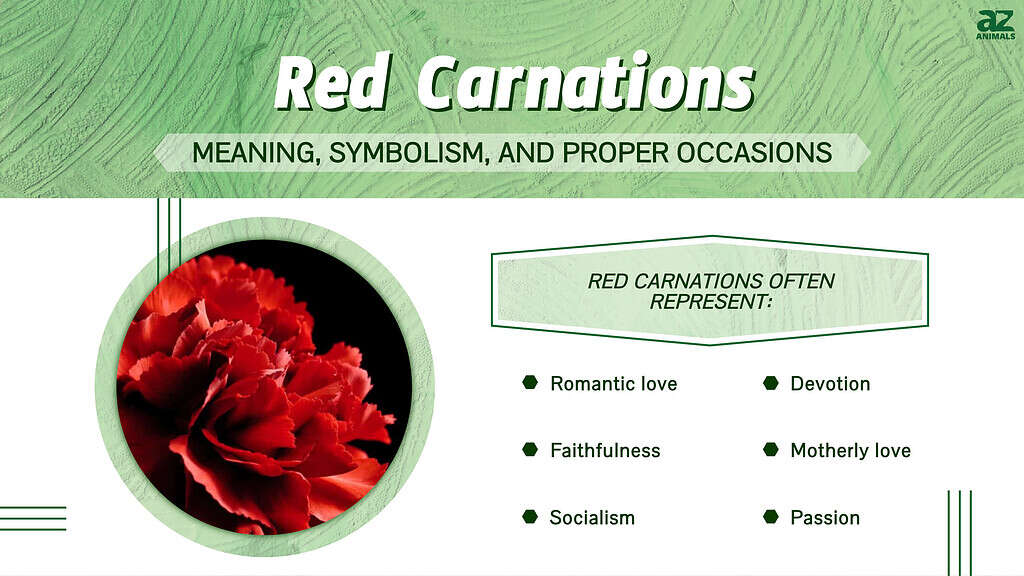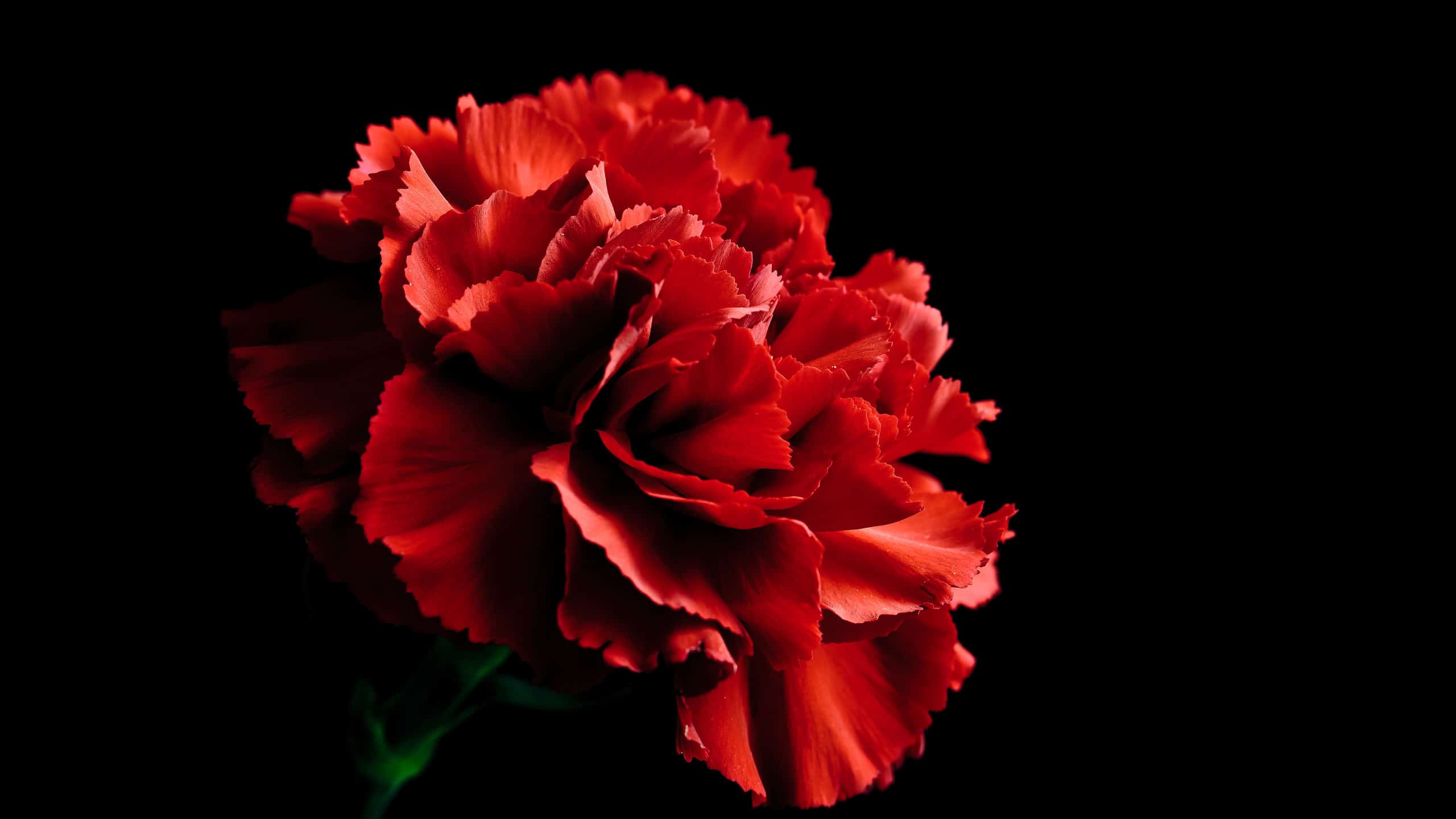Carnations have captivated hearts throughout history, intertwining with stories, legends, and traditions. Beyond their aesthetic allure, these flowers weave a rich cultural significance and symbolism tapestry — especially red carnations. In this article, we explore the fascinating history of red carnations, their symbolic representations, and the occasions where they hold special meaning as cherished gifts.
Let’s dig in!
The History of Carnations
Carnations have a deep history that extends back to ancient times. You can find carnations in Leonardo Davinci’s depictions of the Virgin Mary, ancient mythology, and biblical interpretations. They have even become the symbol for Mother’s Day. These flowers are historically and culturally significant.

Red carnations have a fascinating history and cultural significance.
©iStock.com/rfranca
Red Carnations in the Ottoman Empire
Carnations were incredibly important to the Ottoman Empire (modern-day Turkey). Known locally as the karanfil, the carnation became the preferred flower for decorating fine silks and turbans. The crimson tone with gold adornments represented nobility and loyalty.
The complexity associated with weaving and political tensions with surrounding areas made woven depictions of carnations incredibly valuable. An early 17th-century panel of crimson and gold carnations recently auctioned for between 50,000 – 70,000 GBP ($63,218 – $88,505 USD).
The Turkish are possibly the first people to intentionally use flowers for their symbolism as a way to communicate. They would send encoded messages with different colored flowers to convey their meaning. This practice was called sélam ― The Language of Flowers.
Diana and the Shepherd
Red carnations feature in the legend of the Roman goddess of the hunt, Diana (Artemis in Greek mythology), and the shepherd. Like many tales, this has been handed down for centuries and changed over time.
In one version of the story, Diana or Artemis is returning from a hunt with no success. She stumbles upon a shepherd playing the flute and blames him for scaring away her prey. She then brutally murders the shepherd by tearing out his eyes.
In the other version of the story, Diana falls in love with the shepherd, or he falls in love with her (it varies). The love was unrequited, and the eyeballs were once again forcibly removed.
In both versions, a regretful Diana either appeals to Zeus or uses her own power to have red carnations bloom from his eyes. Language experts believe this is why the French word for carnation is “oeillet” or “little eyes.”
The Carnation Revolution
The Carnation Revolution, which took place in Portugal on April 25, 1974, was a peaceful military coup that led to overthrowing the authoritarian Estado Novo regime.
The fascinating part? Red carnations played a central role in this historic event.
When the coup succeeded, civilians and soldiers flooded the streets of Lisbon, placing red and white carnations into the muzzles of guns and rifles as a symbol of peace and unity. The fragrant flowers became an emblem of the revolution, representing the people’s desire for change and their hope for a better future.
May Day (International Workers’ Day)
May Day, also known as International Workers Day, holds a significant place in the labor movement’s history. Red carnations emerged as a symbol for this day, representing solidarity and the fight for workers’ rights.
This event traces back to the late 19th century when labor activists advocated for an eight-hour workday. On May 1, 1886, a general strike occurred across the United States, demanding this crucial labor reform.
The protests and strike escalated, resulting in the deaths of several participants. People now wear or place red carnations as a tribute to the workers’ sacrifices. They serve as a reminder of the ongoing struggle for labor rights worldwide.
Red Carnations in Spain
Red carnations are Spain’s national flower. This vibrant blossom is woven through the culture and featured in several notable events.
People often throw red carnations at the matadors during bullfighting events. This tradition started when a young, up-and-coming matador was gored by a bull and died from his injuries. Mourners surrounded his coffin with red carnations. Today, many throw red carnations in honor of his passing.
Red carnations also feature heavily at Feria de Abril, an annual festival in Seville. During the festivities, flamenco dancers will display red carnations on their clothing and hair.
Red Carnations: Meaning and Symbolism
People associate red carnations with love and devotion, as is the case with many red flowers.
They also represent workers’ rights, socialism, and cultural pride in many countries — especially in Spain.
The scientific name of carnations is Dianthus caryophyllus. This Greek nomenclature is derived from the words “Dios,” meaning “God,” and “anthos” meaning “flower.” As such, they’re often referred to as the Flower of the Gods in Eastern religions and represent divinity and faith.

Red Carnations: Proper Occasions
These flowers are a beautiful gift for Valentine’s Day, anniversaries, and birthdays for the person you love. You can also give red carnations for Mother’s Day, though a lighter shade of red or white and red variegated carnations are preferred.
Red Carnations: Growth and Care Tips
Carnations thrive in well-drained soil that is rich in organic matter in USDA zones 6-10. Prepare your garden bed by incorporating compost or manure to improve the soil quality.
When it’s time to plant, choose a sunny spot, as carnations love basking in the sun. Sprinkle the seeds about 12 inches apart to allow for proper air circulation as they grow, and gently cover them with soil. You can also start the seeds indoors and transplant them later to ensure adequate spacing.
After planting, thoroughly water the carnations and keep the soil moist but not waterlogged. Regularly remove any weeds around the plants to prevent competition for nutrients.
Red Carnations: Caring for Cut Flowers
Whether you grow and cut your own carnations or purchase them from a florist, you want them to live for as long as possible.
Start by trimming their stems at a 45-degree angle before placing them in a clean vase filled with fresh water. Remove any fallen leaves from the water to prevent bacterial growth.
Change the water every two to three days, ensuring it is at room temperature, and consider adding flower food to the water to provide nourishment and extend their vitality.
Thank you for reading! Have some feedback for us? Contact the AZ Animals editorial team.








